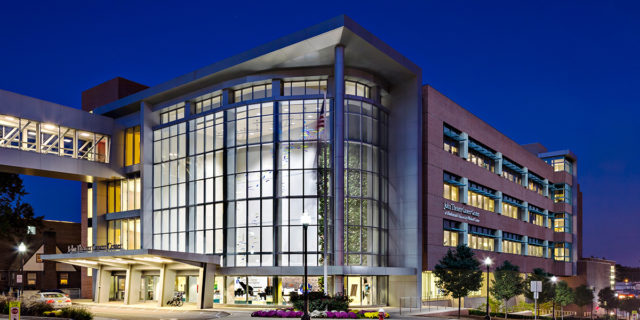Hackensack University Medical Center Embraces Leadership Role in Thoracic Surgery for Cancer
On June 30, 2020, Hackensack University Medical Center became the first hospital in New Jersey to perform an innovative minimally invasive robotic-assisted technique to biopsy a suspected lung cancer. Called Ion, the novel technology enables thoracic surgeons to access hard-to-reach nodules, such as those in the outer periphery of the lungs. The new tool can help doctors identify lung cancers earlier than with existing technologies, allowing patients to start effective treatment sooner and obtain better outcomes.

More than 70 percent of lung nodules that need to be biopsied (analyzed to see if they are cancer) reside far out in the periphery of the lung, making them very difficult to biopsy using conventional bronchoscopy. The Ion system combines computed tomography data and robotic-assisted surgical technology to facilitate and expedite access to these nodules. The entire procedure is performed through bronchoscopy, without the need for any external surgical incisions.
John Theurer Cancer Center at Hackensack University Medical Center also continues to optimize the value of the clinical care it provides – minimizing the use of resources, streamlining clinical evaluations, lowering costs, and shortening lengths of stay. The center recently published non-robotic data and will soon do the same with robotic data.
In an effort to improve use of resources and efficiency while maintaining quality of care, the center redesigned its care processes and ultimately experienced an overall 187 percent reduction of time in the operating room. The process redesign also resulted in significantly fewer chest x-rays per patient, laboratory draws and consultations, which resulted in a 234-percent reduction in mean length of stay and an overall cost reduction of 40 percent. These changes did not have a detrimental effect on patient outcomes: pulmonary complications, cardiac complications and readmission rates all decreased.
More than 70 percent of lung nodules that need to be biopsied (analyzed to see if they are cancer) reside far out in the periphery of the lung, making them very difficult to biopsy using conventional bronchoscopy. The Ion system combines computed tomography data and robotic-assisted surgical technology to facilitate and expedite access to these nodules. The entire procedure is performed through bronchoscopy, without the need for any external surgical incisions.
John Theurer Cancer Center at Hackensack University Medical Center also continues to optimize the value of the clinical care it provides – minimizing the use of resources, streamlining clinical evaluations, lowering costs, and shortening lengths of stay. The center recently published non-robotic data and will soon do the same with robotic data.
In an effort to improve use of resources and efficiency while maintaining quality of care, the center redesigned its care processes and ultimately experienced an overall 187 percent reduction of time in the operating room. The process redesign also resulted in significantly fewer chest x-rays per patient, laboratory draws and consultations, which resulted in a 234-percent reduction in mean length of stay and an overall cost reduction of 40 percent. These changes did not have a detrimental effect on patient outcomes: pulmonary complications, cardiac complications and readmission rates all decreased.
